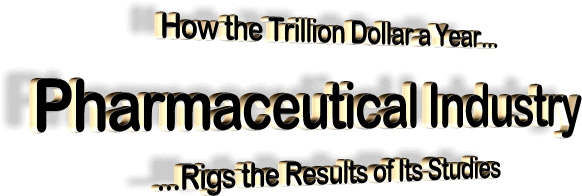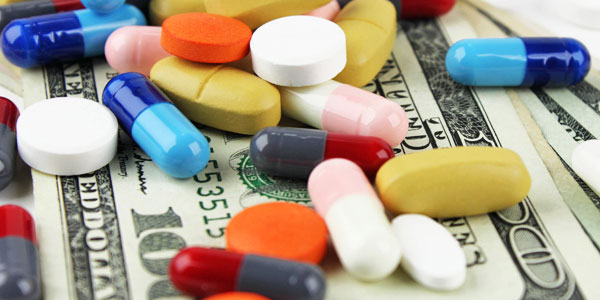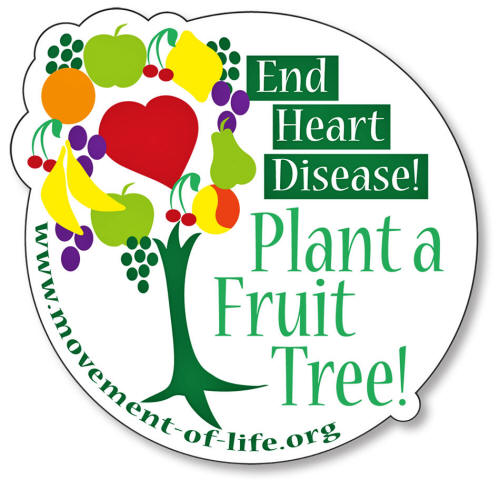|
05 October, 2017 from Dr-Rath-Foundation Website
So successful has it been in implanting this impression into the public consciousness that generations of doctors and patients have lived their entire lives believing the primary motivation for drug companies is improving human health.
Not only is this belief
demonstrably untrue, but the studies carried out to supposedly prove
the efficacy of the pharmaceutical industry's products are
habitually rigged.
Otherwise, were this not the case, the chances of obtaining regulatory approval for them would be substantially reduced.
To understand how this works, let's take a look at some of the key ways in which we are being misled.
But what if, contrary to his claims, it later turned out that the only patients he had reported on were those that were successful in quitting smoking?
Upon learning this, his new patients would undoubtedly feel they had been cheated.
For many years now, failing to report unsuccessful study results has been common practice in the pharmaceutical industry.
Even after the so-called AllTrials initiative was set up in 2015 (a project advocating that all clinical trials conducted should be registered and their results shared as open data), it remains the case that only around half of drug company policies thus far examined refer to trials carried out in the past.
Rather like the hypnotist who didn't make any mention of his previous patients who had failed to quit smoking, we therefore have no idea how many pharmaceutical trials have historically been suppressed because they failed to show a positive result.
Putting scientists on the payroll
A more subtle way in which studies are rigged is that drug companies sponsor the institution and/or scientists that carry them out.
This inevitably creates the expectation of a positive result, as a negative one could naturally result in much-needed funding being withdrawn.
In an example of a conflict of interest we have written about previously, a meta-analysis published in The Lancet medical journal in November 2015 claimed that many more people should be taking "intensive blood pressure-lowering" drugs to reduce their risk of heart attacks and strokes.
Examining a hand-picked selection of 19 trials, the paper essentially asserted that all people deemed to be at risk should be given drug medication - even if their current blood pressure level is normal and irrespective of the danger of severe side-effects.
Significantly, however, in its over-enthusiastic promotion of this study, the mass media failed to draw attention to the fact that half of the researchers who carried it out had connections to multinational drug companies or pro-pharmaceutical research interests.
Mention of financial payments made to these researchers by the drug industry and its stakeholders was also notably absent.
Unreported by the world's newspapers, the monies paid had included grants, honoraria, travel reimbursement, personal fees and salary support.
Just as worryingly, nor did the media either make mention of the fact that several of the researchers had even been on drug company steering committees or advisory boards.
Exaggerating the results
Returning to our example of the hypnotist reporting on the number of people he helped to stop smoking, let's now imagine that he had 100 patients and that 12 of them were successful in kicking the habit.
If we assume, as some evidence (Strategies to Help a Smoker Who is Struggling to Quit) suggests, that only around 6 percent of people who attempt to quit smoking normally succeed, this means that through enabling 12 percent of his patients to stop, the hypnotist's assistance resulted in a 6 percent increase compared to what might have been expected to happen.
Expressed statistically, this is known as using absolute terms.
But if the hypnotist had wanted to exaggerate his results and make them sound more impressive, he might have chosen to quote the relative increase in patients he had helped to stop smoking. Expressed in relative terms, raising the number of people who stopped smoking from 6 to 12 is an increase of 100 percent.
Thus, the advert on the hypnotist's website might state that his services improve your chances of stopping smoking by 100 percent.
Not surprisingly, therefore, pharmaceutical trial results are often expressed using relative terms.
A study (Endpoint Selection and Relative - Versus Absolute - Risk Reporting in Published Medication Trials) published in 2011 analyzed all randomized medication trials published in the six highest impact general medicine journals between June 1, 2008 and September 30, 2010 and found that 44 percent of the study abstracts reported their results exclusively in relative - rather than absolute - terms.
And of course, when such trial results are subsequently then reported through the media using relative terms, the inevitable consequence is a higher public demand for the pharmaceutical products concerned.
Using young people and presenting incomplete data
In her 2004 book, 'The Truth about the Drug Companies', Marcia Angell, MD, former editor-in-chief of the New England Journal of Medicine, points out two further key techniques the pharmaceutical industry uses to rig its studies.
One way, she explains,
Another way,
As if this wasn't bad enough, Angell further admits that,
The bottom line is that, in seeking to achieve ever higher profits, pharmaceutical companies will do almost anything to make out their products to be safer and more effective than they really are.
Making natural preventive health a human right
Given the abundant evidence of its unscrupulous nature, the pharmaceutical industry is undoubtedly the biggest barrier to health.
This therefore means that, if we are to achieve the goal of making natural preventive health a human right, it is essential for the 'business with disease' to be brought to an end.
While nutritional and Cellular Medicine approaches already make it possible for us to reduce and largely eliminate diseases that currently kill millions of people every year, drug companies are utterly opposed to this happening as they realize it would destroy a global disease market whose total value now exceeds $1 trillion a year.
With the World Economic Forum having calculated that by 2030 the global economic impact of the five leading chronic diseases:
...could reach $47 trillion, there is quite simply no time to lose.
To put it bluntly, our choice is between,
To anybody who isn't a stakeholder or apologist for the pharmaceutical industry, the right way forward should be a no-brainer...
|





